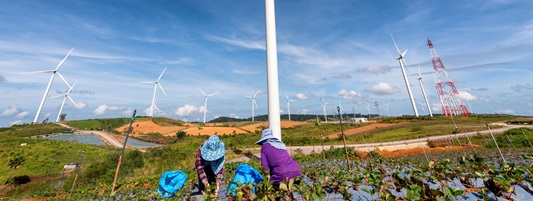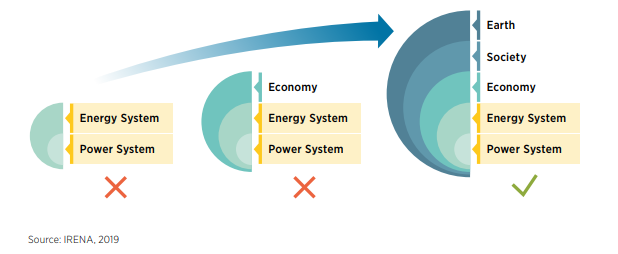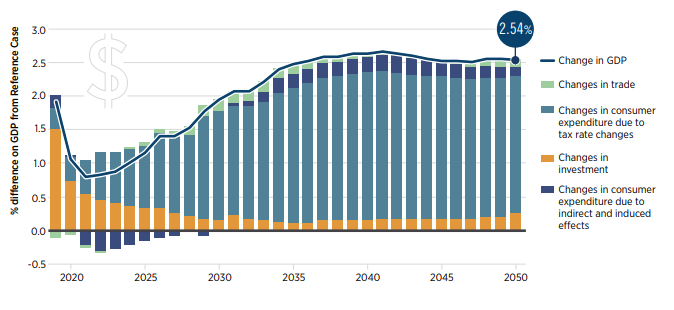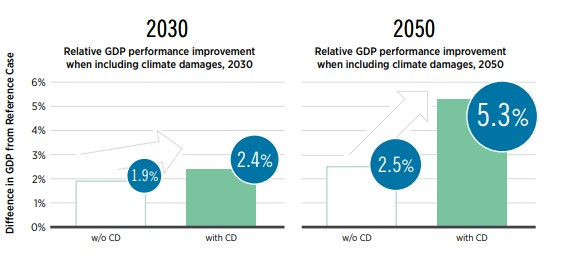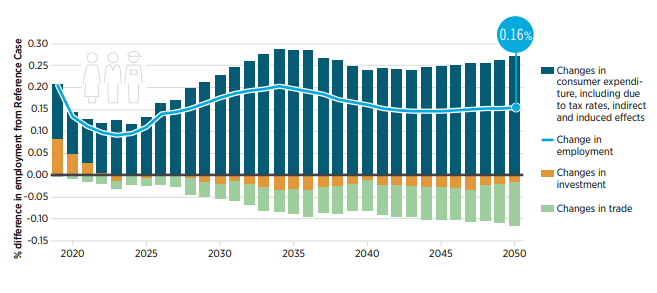Overview
In the updated Global Energy Transformation: A Roadmap to 2050, IRENA designed a socio-economic footprint analysis that delves into the implications of the energy transition, providing footprint measurement in terms of GDP, jobs and welfare. The need for holistic employment and just transition policies is highlighted by analyzing the implications of the transition on whole-economy and energy sector jobs. Climate damages have been included into the macroeconomic analysis, bringing about important socio-economic consequences.
The power and energy systems are embedded into the wider socio-economic system, which in turn is embedded into the earth and its climate. In order to avoid dysfunctional outcomes a holistic policy framework is needed to frame and support the transition.
Both, the energy and socio-economic systems will evolve during the transition, with multiple feedback loops between them. IRENA uses an integrated Energy-Economy-Environment model to evaluate the socio-economic footprint that results from the interactions among different combinations of the energy transition roadmap and the socio-economic outlook.
By 2050, global GDP increases by up to 2.5% relative to the business as usual case. IRENA disaggregates the evolution of GDP into four main drivers: trade, consumer expenditure due to tax rate changes, consumer expenditure due to indirect and induced effects, and investment.
The incorporation of climate damages into the socio-economic footprint analysis leads to a significant increase in the difference between both cases.
In terms of economy-wide employment, there is an increase of 0.2% compared to business as usual. Additionally, within the energy sector itself, the loss of fossil fuel-related jobs is more than compensated by the increase in transition-related employment.
